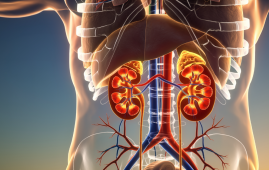

ALAS2 gene mutations that are essential for the synthesis of heme, a critical component of hemoglobin, cause X-linked sideroblastic anemia (XLSA), a rare congenital anemia that may be treated with a novel gene therapy model developed by researchers at Children’s Hospital of Philadelphia.
The study, “A Novel Model of X-Linked Sideroblastic Anemia (Alas2-KO, XLSA) with Ring Sideroblasts, Severe Anemia, and Iron Overload is Rescued by Lentiviral Gene Transfer,” was given by the authors at last week’s 27th Annual Meeting of the American Society of Gene & Cell Therapy (ASGCT) in Baltimore, Maryland.
A range of symptoms, including severe anemia and iron overload, can arise from disruptions in heme synthesis; these symptoms usually appear in adult men under 40 years of age. Blood transfusions and pyridoxine supplements are among the current therapy options available; nonetheless, allogeneic hematopoietic stem cell transplantation is the only solution that is available to a small number of individuals. There hasn’t been much research on gene therapy for this illness up to this point.
Using a conditional mouse model devoid of the ALAS2 gene, the researchers noticed characteristic signs such as splenic enlargement and anemia. The model also demonstrated the characteristic hallmarks of the human condition, including ring sideroblasts, which are immature red blood cells with iron-loaded granules surrounding the nucleus in a pattern resembling a ring. Researchers were able to create a lentiviral vector that controls the expression of the human ALAS2 gene in erythroid cells thanks to the innovative methodology.
Important discoveries revealed that the model’s exposure to the vector greatly increased hemoglobin and red blood cell levels, which helped restore hormone levels that regulate the formation of red blood cells to normal. Hemoglobin levels, spleen health, and iron balance all significantly improved in mice given appropriate doses of the vector. Scientists hope to modify this model to study pharmacological therapy and in vivo gene editing for less severe variants of the illness.
“This new model and vector may hold the keys to transforming the lives of XLSA patients,” stated Stefano Rivella, Ph.D., the group leader, faculty member at the CHOP Division of Hematology, and holder of the Kwame Ohene-Frempong Endowed Chair in Pediatric Hematology research.
“We hope our research will offer a much-needed lifeline for those impacted by this genetic disorder,” stated Carlo Castruccio Castracani, PharmD, Ph.D., the team’s clinical research study manager and the project’s lead scientist.
more recommended stories
 Cardiovascular Risk and Sudden Cardiac Death in Diabetes
Cardiovascular Risk and Sudden Cardiac Death in DiabetesRising Sudden Cardiac Death (SCD) Risk.
 Poor Kidney Function and Alzheimer’s Biomarkers Explained
Poor Kidney Function and Alzheimer’s Biomarkers ExplainedPoor kidney function may influence levels.
 Walking Speed Before Hip Replacement Predicts Recovery
Walking Speed Before Hip Replacement Predicts RecoveryNew Evidence Points to a Simple,.
 Neuroblastoma Drug Combo Extends Survival in Models
Neuroblastoma Drug Combo Extends Survival in ModelsA Promising Shift in High-Risk Neuroblastoma.
 Safer Allogeneic Stem Cell Transplants with Treg Therapy
Safer Allogeneic Stem Cell Transplants with Treg TherapyA new preclinical study from the.
 How Soybean Oil Impacts Weight Gain and Metabolism
How Soybean Oil Impacts Weight Gain and MetabolismWhy Soybean Oil May Affect Metabolism.
 Coffee and Cognitive Function: Evidence Review
Coffee and Cognitive Function: Evidence ReviewA new narrative review in Cureus.
 AI in Emergency Medicine and Clinician Decision Accuracy
AI in Emergency Medicine and Clinician Decision AccuracyEmergency teams rely on rapid, accurate.
 Colorectal Cancer Screening Rates Low in Adults 45–49
Colorectal Cancer Screening Rates Low in Adults 45–49Recent UCLA research reveals that colorectal.
 Gut Immune Cells and Long-Lasting Antiviral Protection.
Gut Immune Cells and Long-Lasting Antiviral Protection.Breakthrough Findings on How Gut Immune.

Leave a Comment